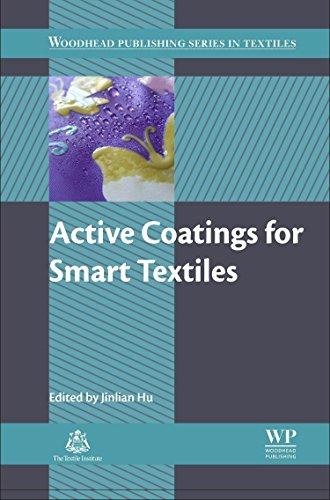Listofcontributors
R.Alagirusamy IndianInstituteofTechnologyDelhi,Delhi,India
F.Alimohammadi ClarksonUniversity,Potsdam,NY,USA;YoungResearchers andElitesClub,IslamicAzadUniversity,SouthTehranBranch,Tehran,Iran
H.Cao UniversityofDelaware,Newark,DE,UnitedStates
A.Das IndianInstituteofTechnologyDelhi,Delhi,India
I.DeVilder Centexbel,TextileCompetenceCentre,Ghent,Belgium
H.Fan ResearchInstituteforBiomimeticsandSoftMatter,FujianProvincialKey LabforSoftFunctionalMaterialsResearch,XiamenUniversity,Xiamen,China
P.Heyse Centexbel,TextileCompetenceCentre,Ghent,Belgium
J.L.Hu InstituteofTextilesandClothing,TheHongKongPolytechnicUniversity, HungHom,HongKong
D.Jocic UniversityofBelgrade,Belgrade,Serbia
C.-W.Kan TheHongKongPolytechnicUniversity,Kowloon,HongKong
A.Kaynak DeakinUniversity,Geelong,VIC,Australia
J.Kiwi EcolePolytechniqueFédéraledeLausanne,Lausanne,Switzerland
L.Leclercq LilleUniversity,ScienceandTechnology,Villeneuved’AscqCedex, France
N.Lin ResearchInstituteforBiomimeticsandSoftMatter,FujianProvincialKey LabforSoftFunctionalMaterialsResearch,XiamenUniversity,Xiamen,China
G.Liu ZhejiangSci-TechUniversity,Hangzhou,China
X.Y.Liu ResearchInstituteforBiomimeticsandSoftMatter,FujianProvincialKey LabforSoftFunctionalMaterialsResearch,XiamenUniversity,Xiamen,China; DepartmentofPhysics,FOS,NationalUniversityofSingapore,Singapore
J.Lu InstituteofTextilesandClothing,TheHongKongPolytechnicUniversity, HungHom,HongKong
M.Manshahia AmityUniversity,Noida,UttarPradesh,India
R.E.Meirowitz RnDTechnicalSolutionsInc.,SanDiego,CA,UnitedStates
V.K.Midha NationalInstituteofTechnologyJalandhar,Punjab,India
A.Mukhopadhyay NationalInstituteofTechnologyJalandhar,Punjab,India
E.Pakdel DeakinUniversity,Geelong,VIC,Australia
M.ParvinzadehGashti YoungResearchersandElitesClub,Yadegar-e-Imam Khomeini(RAH)Branch,IslamicAzadUniversity,Tehran,Iran
A.Ritter RitterArchitekten,Germany
S.Rtimi EcolePolytechniqueFédéraledeLausanne,Lausanne,Switzerland
F.Sala € un UniversityofLilleNorddeFrance,Lille,France;ENSAIT,GEMTEX, Roubaix,France
J.Shao ZhejiangSci-TechUniversity,Hangzhou,China
M.Vanneste Centexbel,TextileCompetenceCentre,Ghent,Belgium
C.Wang JiangnanUniversity,Wuxi,China
Y.Yin JiangnanUniversity,Wuxi,China
L.Zhou ZhejiangSci-TechUniversity,Hangzhou,China
20
Smart fibres,fabricsandclothing
EditedbyX.M.Tao
21 Yarntexturingtechnology
J.W.S.Hearle,L.HollickandD.K.Wilson
22 Encyclopediaoftextile finishing
H.-K.Rouette
23 Coatedandlaminatedtextiles
W.Fung
24 Fancyyarns
R.H.GongandR.M.Wright
25 Wool:Scienceandtechnology
EditedbyW.S.SimpsonandG.Crawshaw
26 Dictionaryoftextile finishing
H.-K.Rouette
27 Environmentalimpactoftextiles
K.Slater
28 Handbookofyarnproduction
P.R.Lord
29 Textileprocessingwithenzymes
EditedbyA.Cavaco-PauloandG.G€ ubitz
30 TheChinaandHongKongdenimindustry Y.Li,L.YaoandK.W.Yeung
31 TheWorldTradeOrganizationandinternationaldenimtrading Y.Li,Y.Shen,L.YaoandE.Newton
32 Chemical finishingoftextiles
W.D.SchindlerandP.J.Hauser
33 Clothingappearanceand fit
J.Fan,W.YuandL.Hunter
34 Handbookof fibreropetechnology
H.A.McKenna,J.W.S.HearleandN.O’Hear
35 Structureandmechanicsofwovenfabrics
J.L.Hu
36 Synthetic fibres:Nylon,polyester,acrylic,polyolefin
EditedbyJ.E.McIntyre
37 Woollenandworstedwovenfabricdesign
E.G.Gilligan
38 Analyticalelectrochemistryintextiles
P.Westbroek,G.PriniotakisandP.Kiekens
39 Bastandotherplant fibres
R.R.Franck
40 Chemicaltestingoftextiles
EditedbyQ.Fan
41 Designandmanufactureoftextilecomposites
EditedbyA.C.Long
42 Effectofmechanicalandphysicalpropertiesonfabrichand
EditedbyH.M.Behery
43 Newmillennium fibers
T.Hongu,M.TakigamiandG.O.Phillips
92
Interiortextiles:Designanddevelopments
EditedbyT.Rowe
93 Textilesforcoldweatherapparel
EditedbyJ.T.Williams
94 Modellingandpredictingtextilebehaviour
EditedbyX.Chen
95 Textiles,polymersandcompositesforbuildings
EditedbyG.Pohl
96 Engineeringapparelfabricsandgarments
J.FanandL.Hunter
97 Surfacemodificationoftextiles
EditedbyQ.Wei
98 Sustainabletextiles
EditedbyR.S.Blackburn
99 Advancesinyarnspinningtechnology
EditedbyC.A.Lawrence
100 Handbookofmedicaltextiles
EditedbyV.T.Bartels
101 Technicaltextileyarns
EditedbyR.AlagirusamyandA.Das
102 Applicationsofnonwovensintechnicaltextiles
EditedbyR.A.Chapman
103 Colourmeasurement:Principles,advancesandindustrialapplications
EditedbyM.L.Gulrajani
104 Fibrousandcompositematerialsforcivilengineeringapplications
EditedbyR.Fangueiro
105 Newproductdevelopmentintextiles:Innovationandproduction
EditedbyL.Horne
106 Improvingcomfortinclothing
EditedbyG.Song
107 Advancesintextilebiotechnology
EditedbyV.A.NierstraszandA.Cavaco-Paulo
108 Textilesforhygieneandinfectioncontrol
EditedbyB.McCarthy
109 Nanofunctionaltextiles
EditedbyY.Li
110 Joiningtextiles:Principlesandapplications
EditedbyI.JonesandG.Stylios
111 Softcomputingintextileengineering
EditedbyA.Majumdar
112 Textiledesign
EditedbyA.Briggs-GoodeandK.Townsend
113 Biotextilesasmedicalimplants
EditedbyM.W.King,B.S.GuptaandR.Guidoin
114 Textilethermalbioengineering
EditedbyY.Li
115 Woventextilestructure
B.K.BeheraandP.K.Hari
138
Advancesinthedyeingand finishingoftechnicaltextiles
M.L.Gulrajani
139 Multidisciplinaryknow-howforsmarttextilesdevelopers
EditedbyT.Kirstein
140 Handbookof fireresistanttextiles
EditedbyF.SelcenKilinc
141 Handbookoffootweardesignandmanufacture
142
EditedbyA.Luximon
Textile-leddesignfortheactiveageingpopulation
EditedbyJ.McCannandD.Bryson
143 Optimizingdecisionmakingintheapparelsupplychainusingarti ficial intelligence(AI):Fromproductiontoretail
EditedbyW.K.Wong,Z.X.GuoandS.Y.S.Leung
144 Mechanismsof flatweavingtechnology
V.V.Choogin,P.BandaraandE.V.Chepelyuk
145 Innovativejacquardtextiledesignusingdigitaltechnologies F.NgandJ.Zhou
146 Advancesinshapememorypolymers
J.L.Hu
147 Designofclothingmanufacturingprocesses:Asystematicapproachto planning,schedulingandcontrol J.Gersak
148 Anthropometry,apparelsizinganddesign D.GuptaandN.Zakaria
149 Silk:Processing,propertiesandapplications
EditedbyK.MurugeshBabu
150 Advancesin filamentyarnspinningoftextilesandpolymers
EditedbyD.Zhang
151 Designingapparelforconsumers:Theimpactofbodyshapeandsize
EditedbyM.-E.FaustandS.Carrier
152 Fashionsupplychainmanagementusingradiofrequencyidentification (RFID)technologies
EditedbyW.K.WongandZ.X.Guo
153 Highperformancetextilesandtheirapplications
EditedbyC.A.Lawrence
154 Protectiveclothing:Managingthermalstress
EditedbyF.WangandC.Gao
155 Compositenonwovenmaterials
EditedbyD.DasandB.Pourdeyhimi
156 Functional finishesfortextiles:Improvingcomfort,performanceandprotection
EditedbyR.Paul
157 Assessingtheenvironmentalimpactoftextilesandtheclothingsupplychain S.S.Muthu
158 Braidingtechnologyfortextiles
Y.Kyosev
159 Principlesofcolourappearanceandmeasurement
Volume1:Objectappearance,colourperceptionandinstrumentalmeasurement
A.K.R.Choudhury
160
Principlesofcolourappearanceandmeasurement
Volume2:Visualmeasurementofcolour,colourcomparisonandmanagement
A.K.R.Choudhury
161 Inkjettextileprinting
C.Cie
162 Textilesforsportswear
EditedbyR.Shishoo
163 Advancesinsilkscienceandtechnology
EditedbyA.Basu
164 Denim:Manufacture, finishingandapplications
EditedbyR.Paul
165 Fabricstructuresinarchitecture
EditedbyJ.IgnasideLlorens
166 Electronictextiles:Smartfabricsandwearabletechnology
EditedbyT.Dias
167 Advancesin3Dtextiles
EditedbyX.Chen
168 Garmentmanufacturingtechnology
EditedbyR.NayakandR.Padhye
169 HandbookoftechnicaltextilesSecondeditionVolume1:Technicaltextile processes
EditedbyA.R.HorrocksandS.C.Anand
170 HandbookoftechnicaltextilesSecondeditionVolume2:Technicalapplications
EditedbyA.R.HorrocksandS.C.Anand
171 Sustainableapparel
EditedbyR.S.Blackburn
172 Handbookoflifecycleassessment(LCA)oftextilesandclothing
EditedbyS.S.Muthu
173 Advancesinsmartmedicaltextiles:Treatmentsandhealthmonitoring
EditedbyL.vanLangenhove
174 Medicaltextilematerials
Y.Qin
175 Geotextiles
EditedbyR.M.Koerner
176 Activecoatingsforsmarttextiles
EditedbyJ.L.Hu
177 Advancesinbraidingtechnology:Specializedtechniquesandapplications
EditedbyY.Kyosev
178 Smarttextilesandtheirapplications
EditedbyV.Koncar
Introductiontoactivecoatings forsmarttextiles 1
J.L.Hu
InstituteofTextilesandClothing,TheHongKongPolytechnicUniversity,HungHom, HongKong
1.1Introduction
Thecoating, fi nishing,andlaminationoftextilesareoldartsandtraditional technologiesandareusedinalmosteveryareaofindustryandourlives.Laminatingcombinesafabricandaprepared fi lmbyadhesive,heat,andmechanical bonding,whichreplacesorsupplementssewingtoobtainlaminatedfabricswith enhancedfunctionandmoreconsistentqualities.However,itiseasytoconfuse thede fi nitionsofcoatingand fi nishing.Theterm “ fi nishing ” isusuallyusedina broadsensetorefertooperationsforimprovingtheappearanceorusefulnessof atextileafteritleavestheloomorknittingmachine( Tomasino,1992 ).These operationsincludewashing,bleaching,coloring,andallkindsofchemicaland mechanicalstepsthatmaycomprisecoating.Inthisbook, “ fi nishing ” isusedin itsnarrowde fi nition(SchindlerandHauser,2004 ),whichisthe fi nalstepinthe textilemanufacturingprocess( Fig.1.1 ),whichdistinguishesitfromacoatingaccordingto fi lmcontinuityormorphologyinprocessingtechnologies.Underthis de fi nition, fi nishingandcoatingbothcreatethecharacteristicsoftextilesand endowthemwithspecialperformancesuchasthe fi nalhandfeeling.Thecoating alsocancompleteyarnpreparationsuchaswarpsizing.Incoating,athickliquid chemicalorpasteisusedthatformsacontinuous fi lmontheyarnortextilesurface, formedinsitu.Gapsbetween fi bersandyarnsmaydisappearornarrowtovarying degrees.In fi nishing,thelightliquidchemicalpasteisappliedandpenetratesinto the fi bersandyarnstomakeupthetextile,afterwhichthegapscannotbealtered betweentheyarnsand fi bers( Fung,2002 ).
Traditionaltextilecoatingsarecommonlypassiveprotectionsordecorationsforthe substrateforwhichtheyaredesignedandareappliedbyprovidingabarrieronthesurface.Someadvancedcoatingsincludefunctionalmaterialsthatenablethetextilesto exhibitincreasedfunctionalitiessuchaswrinklefree, flameretardant,etc.Furthermore,anactivecoatingistobeconsideredsmart.Itisabletosenseachangeinconditionsandrespondtoitinapredictableandconspicuousmanner.Generallyspeaking, anactivecoatinggivestextilesintelligentpropertiesmorethanjustfunctionalperformance(Smith,2010).Theactivecoatingsensestheenvironmentchanging,responds toit,anddoessomethingbyitself.
Activecoatingscanbecategorizedinmanydifferentwaysbasedonthesmart ingredients,fabricationtechnologies,andapplications.Forintelligenttextilesor
Introductiontoactivecoatingsforsmarttextiles3
1.2Functionsandapplicationsofactivecoating
Functionsoftextilecoatingareusuallysummarizedaccordingtotheirapplied chemicalproperties,suchasantibacterial,waterresistance,etc.Inthischapter, however,theirfunctionsareclassi fi edintothreemajorcategories;examplesare listedin Table1.1 basedonthetypeofcommonoractivecoating.
Applicationsoftextilecoatingarelistedonlypartiallybasedonindustrialand civilianuses.Thisisagoodplacetobeginunderstandingcommoncoatingsand discusspotentialapplicationsforactivecoatings,whichalsohaveoccurredorbeen appliedintheseareasandproducts:forexample,inbreathablegarmentswitha water-responsive,variable-sizedopeningfabricstructure;inantibacterialbedding; andinimpact-activeprotection(Table1.2).
Table1.1 Functionsofcommonandactivetextilecoating
CategoriesCommoncoatingActivecoating
AestheticWrinklefree; flatappearance; dimensionalstability;antistain; wateroroilrepellent;leather; colorresistance
ComfortWindproof;thermalresistance; waterresistance;moisture management
ProtectionHumidityresistance; flame retardant;antiimpact;ultraviolet protection;antistatic;reflective; chemicalresistance;blood resistance;anticorrosion;safety airbag;thermalinsulating;aging resistance
OthersFiltration;stiffness
Colorchange;appearanceretention; self-cleaning;
Thermaladjustability;breathability
Antibacterial;wearableelectronics forbiomedicaluse;self-healing; chemicalodorabsorbingand decomposing
Table1.2 Applicationsoftextilecoatings
AreasExamples
ClothingGarments;footwear;accessories
HomefurnishingsUpholstery;bedding;carpet
MedicalsImplants;barriermaterials;bandages;hygieneproducts;health monitor
IndustrialBelts;hoses; filtration;screens;covers;liners;barriers;tents; separation;buildingreinforcementlayer
1.3Developmentofsmartmaterialsforactivecoating
Smartmaterialsforactivecoatingaremostlyactivematerialswhichtransportthe sensingandrespondingpropertiestotextilesbytraditionalcoatingtechnologies (Singha,2012).Adaptivepolymerscanexhibitdistinctandgreatchangeswhen respondingtoasmallstimulus.Accordingly,adaptivecoatingtextileshavepreprogrammedresponsestosmallenvironmentalchanges.Differentstimulationsofactive materialsarelisted;thesehavebeenappliedinactivecoatingtextiles:
• heatandtemperature
• pHvalue
• chemicalandionicstrength
• electromagneticradiation(ultraviolet,visiblelight)
• electricalandmagnetic fields
• mechanicalstress,strain,andpressure
• waterandhumidity
Anumberofactivematerialsexistfortextilecoating,suchassmartandpolymeric hydrogels,memorypolymers,phase-changematerials,color-changematerials,and functionalnanomaterials.
Smartorpolymerichydrogelsasaspecialclassifi cationofhydrogelsdisplay differentchangesunderspeci ficstimulisuchastemperature,pHsensitivity,light, salt,andstress.Responsesincludeswelling/collapsingandhydrophilic/hydrophobic changesinshape.Themostcommonlyusedhydrogelsinactivecoatingare temperature-activehydrogelswithatransitiontemperatureadjustedbyadditives,a modifyingmonomerstructure,orcopolymerization.Thewidelyappliedandknown hydrogelactivecoatingapplicationistemperature-dependentwatervaporpermeability textiles,basedontheirswellingandintegritycharacteristicsbelowandabovethe switchtemperature.
Memorypolymerscansensethermal,mechanical,electric,andmagneticstimuli andrespondbychangingshape,position,stiffness,andotherstaticanddynamical characteristics.Memorypolymershavefoundwideapplicationsintextilesandother fi elds.Theirlowcost,goodprocessingability,andcontrollableresponsesmake themmoresuitableforindustrialproductionthanmemoryalloy(MariaRosaAguilar, 2014;Hu,2010).Thefunctionsofmemorypolymerscanbeachievedinmanysystems suchasamolecularstructurewithcovalentandnoncovalentbondingorasupramolecularstructurewithnovelquadruplehydrogenbonding.Asagroupofthemostapplicablesmartmaterials,memorypolymershavedevelopedrapidlyinbothacademics andindustryareasinpastdecades.
Adaptivepolymericparticlesincludenanoparticlesandmicrocapsules.Thebenefits ofsmartmaterialscombinedwithparticlematerialsgiveanintegratedandunique propertytotextilecoatingowingtotheirtinyformsandresponsivecharacteristics, whicharedifferentfromnormalparticles.Themorphology,shape,size,lightrefl ection/diffraction,andsolventabilityaretheimportantchemicalandphysicalparameters ofadaptivepolymericparticles.Thesurfacepropertiesofnanoparticlesaremore essentialthanthoseofmicrocapsules.Thesurfaceenergy,surfacestructure,and 4ActiveCoatingsforSmartTextiles
inorganicorbothinorganicandorganicresults.Severalmethodscanbeappliedto obtainsol gelcoatingswiththesol gelprocess(Huangetal.,2001).Spincoating, dipcoating,androllcoatingarebasictechniquesusedtodepositsol gelcoatings. Microencapsulationhasbeenprovenasasuccessfultechnologyinthepharmaceuticalandagrochemicalindustries.Thetechnologyallowscombinationstobemadeof thepropertiesofdifferentmaterialsthatwillachievevariousactiveperformancesfrom thesmarttextiles.
1.5Outlineofthebook
Thiseditedbookisintendedtoprovideanoverviewandreviewofthelatestdevelopmentsinactivecoatingmaterialsandthetechnologiesoftextilesforsmartclothing, protectiveclothing,andequipment,andbiomedicalandindustrialapplications.It targetsreadersincludingresearchersinmaterialssciencetextileprocessing;engineers intheareaofsmarttextilesproductdevelopments;architects,medicalscientists,equipmentdevelopers,andstudentsincollegesanduniversities.
Thebookhasbeencontributedtobyapanelofinternationalresearchersandexperts inthe fieldandcoversvariousaspectsofactivecoatingresearchanddevelopment.Itis composedof18chapters,whichcanbedividedintothreepartsexceptthischapter,the introduction,whichprovidesbackgroundinformationonactivecoatingtechnologyfor textilesincludingabriefoverviewofactiveandsmartmaterials,coatingtechnologies, andthebook’sstructure.The firstpartinvolvesaclassifi cationofmainactivecoatings fromChapters2to8.Chapter2isconcernedwithmemorypolymersandtheir smartcoatingforappearanceandstructureretention,andhydrophobic/hydrophilic textiles.Chapter3dealswithactivecoatingbynanoparticlesforself-cleaningtextiles. Chapter4presentsself-healinganddurabletextilecoatingsusingaspecificmemorymaterial.Chapter5involvessmartbreathabletextilescoatedwithawatervapor permeability-controlledmaterial.Chapter6presentsproteincoatingsforsmarttextiles, andChapter7discussesnaturalphotonicmaterialsfortextilecoatings.
ThesecondpartcontainssixchaptersfromChapters8to13,withafocusoncoating processesandtechniquesforactivetextiles.Chapter8providesanoverviewofthedevelopmentsandkeyissuesincoatingtechniquesandprocesseswhichintegratesmart materialsandtextiles.Chapters9 13describeadvancedtechnologiesandprinciples foractivecoating,whichconsistofmicroencapsulationtechnology,plasmasurface treatment,nanotechnology,biomimeticcoatingtechnology,andsol geltechnology.
Thethirdpartfocusesonapplicationsofactivecoatingtextiles.Chapter14outlines varioussmartcoatingsforcomfortclothingandChapter15concentratesonsmart coatingsforsportswear.Chapter16describestheapplicationsofsmartcoatingsfor protectiveclothingandequipment.Chapter17introducesmedicalapplicationsof smartcoatingtextilesforpatientcareandwounddressings.Chapter18describes applicationsinarchitecturetextiles. 6ActiveCoatingsforSmartTextiles
structure,memorypolymercoatingfunctions,andmechanismofmemoryperformance transferredfrompolymertotextileswillbeintroducedinthischapter.
2.2Memorypolymers
Asmentioned,memorialmaterialsarecomposedoflargequantitiesofstructures,from metalstopolymers,composites,andceramics.Forsmarttextilecoatings,memory polymersandtheircompositeshavebeenwidelyresearched.Memorypolymers mainlyrefertoshapememorypolymerssuchasshapememorypolyurethane(PU), polyester,polyhydroxyproline,polysilamine,etc.,andsomeresponsivehydrogels includingpoly(N-isopropylacrylamide)(PNIPAAm)hydrogels,polythiophenegel, etc.Theyalsorefertomemorypolymercompositescomposedofshapememorypolymer/cellulosecomposites,poly(N-vinylcarbazole)composites,shapememorypolymer/nanowhiskers,etc.Memorypolymersandtheircompositeshaveseveral advantagesfortextilecoatings:(1)Theyusedifferentstimuliandtriggerswhichtextilescommonlyundergo,suchaswater,light,andheat;(2)theyhavehighly flexible programming,whichcanbedonewithvariousstimulibysingle-ormultiple-stepprocesses;(3)theypossesstunablepropertiesthatcanbeengineeredeasilytobeapplied ontothefabricsurface;and(4)theyhavealightandadjustablemodulusthatiseasily identicaltoatextile’ssoftness.Thestructure,mechanism,andclassifi cationofmemorypolymersandgelswillbeintroducednext.
2.2.1Structuresandmechanismsofmemorypolymers
Memorybehaviorcanbedemonstratedinvariouspolymersystemsthataredifferentin molecularstructureandmorphology.Commonconventionalmemorysystemsare listedin Table2.1.
Severaltypesofstructureandprogrammingmodelshavebeenproposedtodescribe themechanismofthememoryeffects.Inchemicallycross-linked,semicrystalline, thermallyresponsivepolyethylene(PE),thecrystallinephasewithacrystalmelting
FormsMolecularstructure
Cross-linkedPolyethylene,polycyclooctene
CopolymerDodecanedioicacidandbileacid basedpolyesters
Cross-linkedcopolymerEthylenevinylacetate
SegmentedPolyurethaneionomers,polyurethane
OthersStyrene-basedpolymers,acrylate-basedpolymers,epoxy-based polymers,thiophene-basedpolymers
Table2.1 Formsandmolecularstructuresofmemorypolymers
Thefocusofmuchresearchonmemorypolymersistoenhancetheirthermaland mechanicalcharacteristicsandexpandtheirsmartfunctionsbyimplantingswitch typestomeetparticularrequirements.Themoleculardesignmethodcandevelop tailor-madememorypolymersandcompositesmethodsandoffersimpleandefficient waystoobtainspecialtriggeringmechanismsandfunctionalities.Itisnecessaryand helpfultostudythemodelingofthestructureandprocessmemoryeffectsandtheir processes.Thefollowingsectionpresentsanoverviewofthegrowthofmemory switchesandshapememoryfunctionalities.
Theswitchunitisanimportantcomponentwhichdifferentiatesmemorypolymers fromothers.Intheearliestreports,switcheswereeitheramorphousorsemicrystalline phases.Researchershavebeendevelopingmorespecialswitchessincethen.Besides switchesonaphase-transitionlevel,otherseriesofswitchesbasedonreversiblemolecularunitshavebeenexploited,suchassupramolecular,photosensitive,andmercaptounits,whichhaveledtotheemergenceofnewtypesofsensitivitiessuchas moisturesensitivityandlightsensitivity(Chen,2009a,b; Wuetal.,2011).Switches ofshapememorypolymersaresummarizedin Table2.3.Fromaphaselevel,three kindsofswitchunitshavebeenstudied:semicrystalline,amorphous,andliquidcrystalline.Memorypolymersbasedonphase-levelswitchunitsarecommonlythermally sensitivepolymerswithtransitiontemperaturesoftheglasstransitiontemperature(Tg), meltingtransitiontemperature(Tm),orliquidcrystalswitchtemperature(Ti).
Cross-linkedPEisconsideredthe fi rsttypeofmemorypolymerbasedonsemicrystallinity.Currentpolymericsegmentsusedassemicrystallinephaseswitchesfor memorypolymerscanbedividedintothreetypes.The fi rstispolyolefi nssuchas PE(Morshedianetal.,2003),poly(ethylene-co-1-octene)(Kolesovetal.,2009), trans-polyisoprene(SunandNi,2004), trans-polycyclooctene(Liuetal.,2002),and poly(1,4-butadiene)(Sakuraietal.,1994);thesecondtypeincludespolyetherssuch aspolyethyleneoxide(PEO)(Luoetal.,1997),polyethyleneglycol(PEG)(Meng andHu,2008),andpoly(tertramethyleneetherglycol)(Leeetal.,2001);andthethird typecoverspolyesterssuchaspoly(caprolactone)(PCL)(Jietal.,2007;Lendlein etal.,2001;Huetal.,2005),poly(butyleneadipate)(Hanetal.,2007),and poly(3-hydroxyalkanoate)(Chenetal.,2007a,b).
Memorypolymerswithamorphousphaseswitchunitshavebeeninvestigatedto showrelativelyslowshaperecoveryeffectscomparedwithotherphase-levelswitch memorypolymersowingtothebroaderglasstransitioninterval.Besidesthethermal stimulus,memorypolymerswithamorphousphaseswitchunitscanbeactivatedbya solventorwater(Yangetal.,2004,2006;Huangetal.,2005;DuandZhang,2010)but therecoverystressisoftensmall.
Liquidcrystallineelastomers(LCEs)havea fi rst-orderphasetransitionwithan endothermicpeakonheatingcurveswhichshowsthematerial’stransitionfroman anisotropictoanisotropicphase.Similartothe Tg-and Tm-typememorypolymers, chemicalorphysicalcross-linksarealsorequiredinTi-typememorypolymers madeofLCEstoexhibitshapememoryeffects.
Nematicphase(Ahiretal.,2006)orsmecticphase(RousseauandMather,2003)is commonlyusedasaswitchforliquidcrystalmemorypolymers.Manytypesofliquid crystalmemorypolymersarethermallysensitivebasedonthe Ti orthecombinationof 14ActiveCoatingsforSmartTextiles



